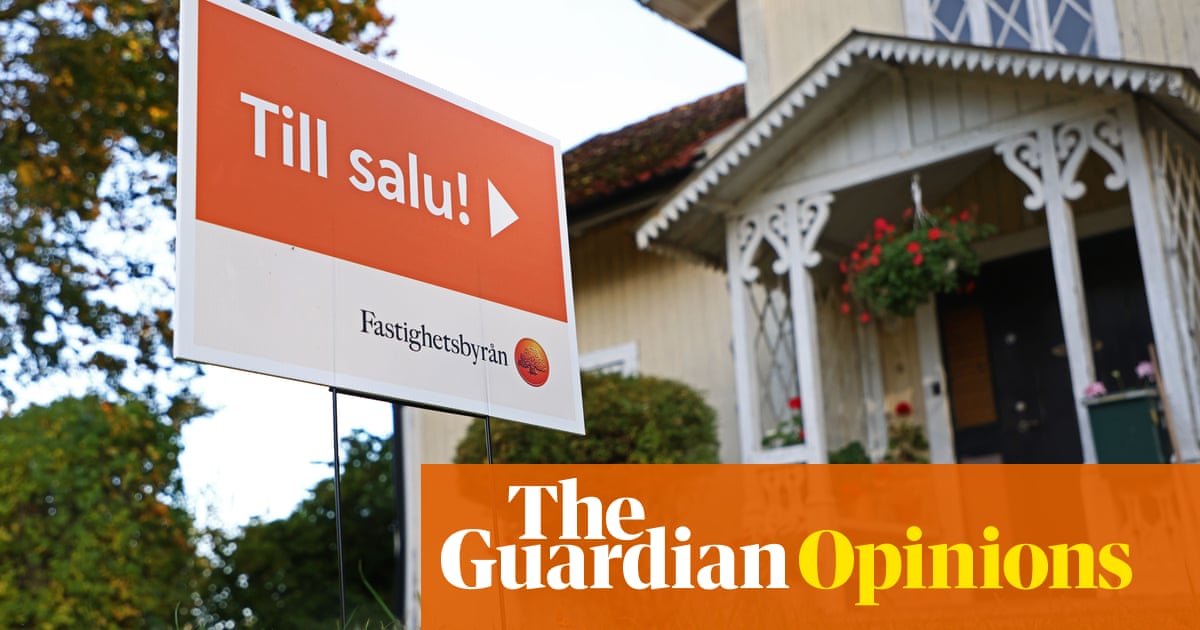
Given media coverage, one could, in late 2022, have been forgiven for thinking that little of importance was going on in Sweden besides gang violence and hand-wringing over Nato accession. But a November report in the newspaper Aftonbladet suggested that something else just as important was afoot. In Södertälje, in southern Stockholm, it was widely observed that children were eating “much more” at school on Mondays than previously. One food supplier spoke of an “avalanche-like” change.
My mind went back to this evidence of increasing child poverty when, four months later, the European Commission’s latest forecasts predicted Sweden to be the worst performing of all EU economies in 2023 – a projection in line with the Swedish government’s own.
By all accounts, one important factor behind the Swedish economy’s travails is a large fall in construction, brought about by rising interest rates. But the biggest reason is falling consumption. Household finances are under growing pressure and belts are being tightened. What was ominous about the Aftonbladet report was the indication that the tightening is not just metaphorical.
A struggling economy is not what people either inside or outside Sweden have come to expect of the country. It made it through the global financial crisis of 2008–10 relatively unscathed, with the Financial Times naming Sweden’s finance minister, Anders Borg, as Europe’s best in 2011. Between 2008 and 2021, Sweden’s average annual GDP growth (1.7%) was double that of the EU as a whole (0.85%). Indeed, for many, Sweden has long been something of a poster child for successful macroeconomic management and performance.
So what has gone wrong?
Present throughout Europe, inflation in the prices of everyday goods is proving especially strong and persistent in Sweden, where it has been exacerbated by the weakness of the krona and a lack of competition in key sectors such as retail, the latter allowing firms to mark up prices with little constraint. More pressingly, the government has done little to shield households from high energy prices. Relative to GDP, only two of 28 other European governments have committed less funds for this purpose than Sweden has.
But the key issue by some margin is housing. House prices have fallen further and faster from bubble territory than anywhere else in Europe, with the inevitable knock to consumer confidence in a country where about 70% of householders are owner-occupiers. These households have also seen actual regular housing-related outgoings increase faster and further than elsewhere, meaning spending on other things has dropped.
How to account for these particularly severe housing effects? Sweden’s central bank, the Riksbank, has increased interest rates, albeit in a less aggressive manner than the Federal Reserve or Bank of England. This has decisively affected the housing market. As commentators have noted, both the quantity and type of Swedish mortgage debt have played a key role in this. Compared with other countries, the amount of such debt relative to disposable household income is high; so also is the proportion of such debt that is payable at variable rather than fixed rates.
It has proven a vicious combination. As lenders have raised rates, large numbers of mortgaged households have felt the impact immediately – already by the beginning of 2023 about half of the central bank’s overall rate increase had reached households with existing mortgages – and the impact has cut savagely into vulnerable income capacities. The situation is even worse for apartment owners, who generally own their flats indirectly through cooperatives that often have loans of their own to service – the increased costs of which are passed on to owners.
Where does responsibility for all this lie, then? One thing we cannot say is that people were not warned. Stefan Ingves, the Riksbank’s governor from 2006 to 2022, fired repeated warnings about the buildup in mortgage debt to anyone who cared to listen, at one point likening the Riksbank’s job as rate-setter to “sitting on top of a volcano”.
Some would have you believe that the fault lies with avaricious, foolhardy households chasing speculative capital gains in a housing market that few could remember ever going down. Such a stance seemingly found support in the journalist Andreas Cervenka’s bestselling book, Girig-Sverige (greedy Sweden), published with impeccable timing in 2022.
Perhaps there is an element of truth in this. But if Sweden’s homebuyers have been greedy, this is in part, as Cervenka acknowledges, because they have been politically encouraged to be so.
This, ultimately, is the nub of the matter. What Sweden is facing up to today is massive, long-term political failure to sort out its housing market.
On the one hand, Sweden has continued to substantially subsidise home ownership, pouring unnecessary fuel on the fire of the housing bubble. Most notable here is tax relief on mortgage interest. Decades after such relief was jettisoned elsewhere – even the famously homeowner-friendly UK got rid of it in 2000, Gordon Brown rightly describing it as a middle-class perk – it remains in place, absurdly, in Sweden.
On the other hand, Sweden has a fundamentally broken rental system, which for a variety of reasons comprehensively fails to make affordable accommodation widely and readily available in the largest cities, especially for those with greatest need and least resources. The effect of this lack of viable rental accommodation has been to further inflate demand for home-ownership, putting additional upwards pressure on house prices and debt burdens.
Brett Christophers is a professor in the Institute for Housing and Urban Research at Sweden’s Uppsala University and author of Our Lives in Their Portfolios: Why Asset Managers Own the World












